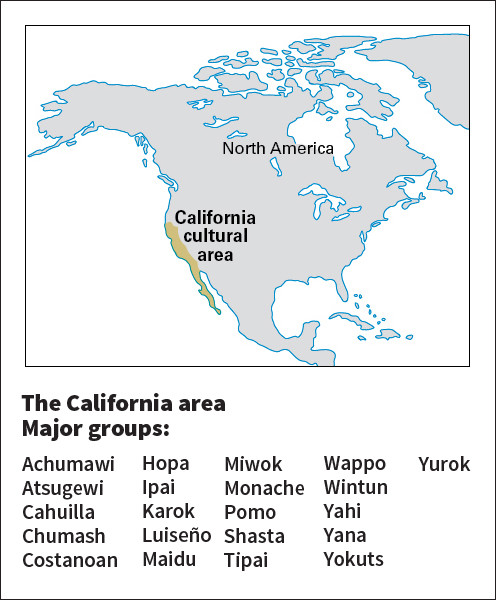Mono , << MOH noh, >> are a Native American people of what is now east-central California and western Nevada. There are several subgroups of Mono, which are usually divided between eastern and western bands. Eastern Mono are sometimes called Owens Valley Paiute. Western Mono are also called Monache. Mono Lake, an ancient salt lake in California, is named for them.

In the late 1700’s, about 4,000 Mono lived in a region north of the Tule River and along the eastern slopes of the Sierra Nevada mountains. Mono traditionally lived by hunting and fishing and by gathering wild plant foods. Wild acorns and pine nuts served as particularly important foods. Mono lived in oval or cone-shaped houses built of wood and covered with bark. Their craftworkers made fine arrowheads and other tools from local obsidian (volcanic glass). Mono had close trading and intermarriage relationships with nearby groups, including the Paiute and Yokuts. The Mono spoke a language in the Uto-Aztecan language family, related to that of the nearby Northern Paiute Indians.

In the 1830’s, a malaria epidemic killed many Mono people. Later, the California gold rush of 1849 brought many white settlers into their territory, forcing many Mono off their traditional lands. Today, about 2,200 Mono live in the United States, mostly in California.
